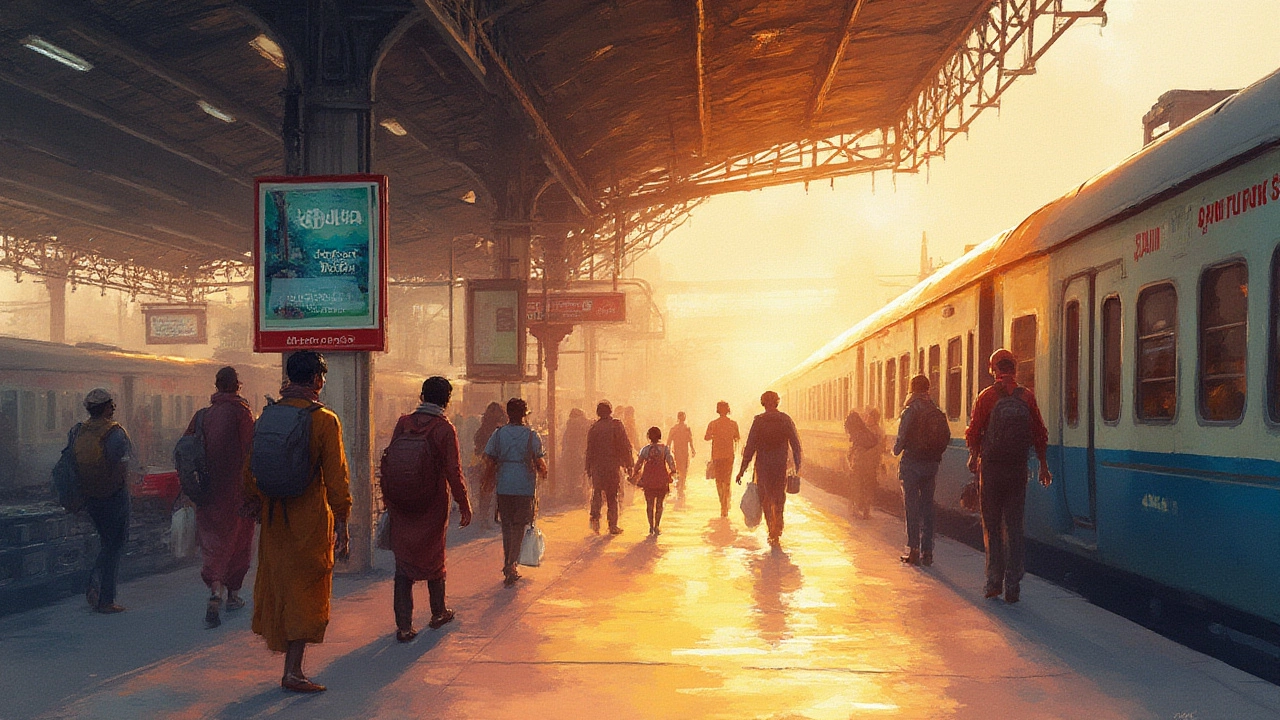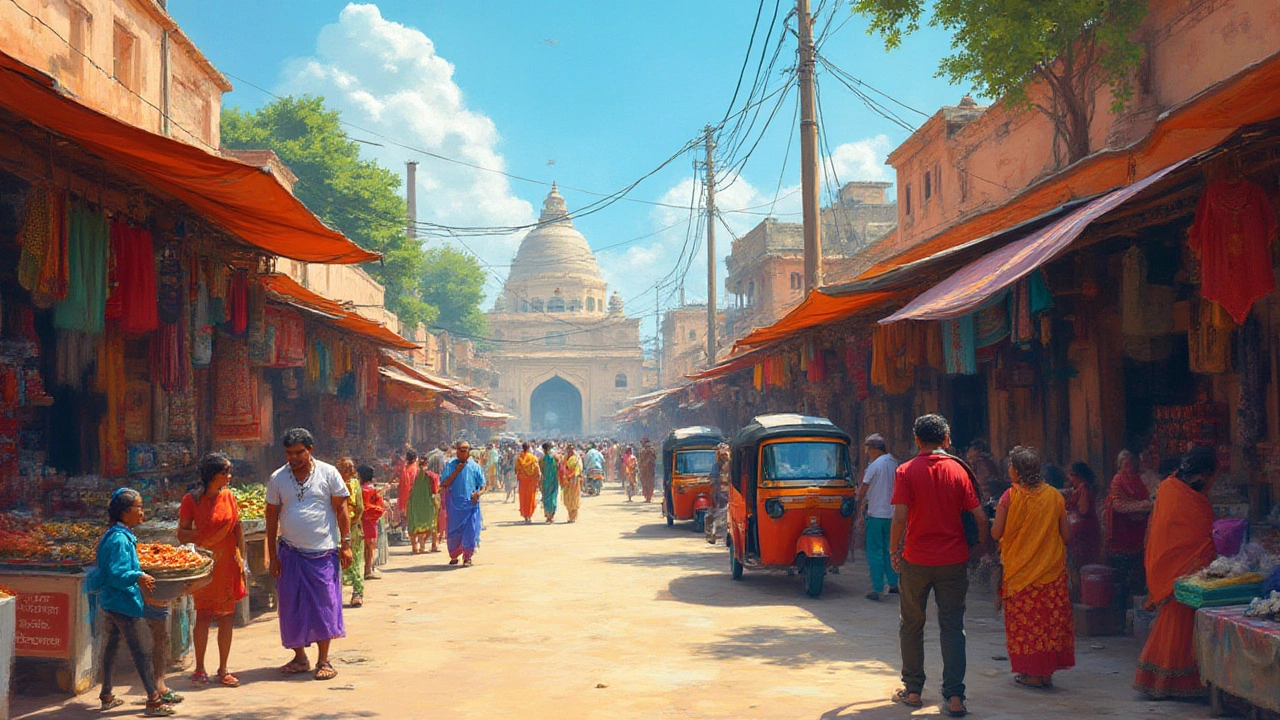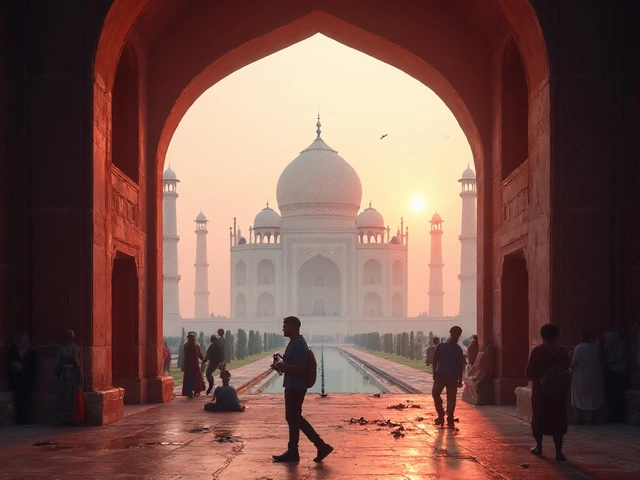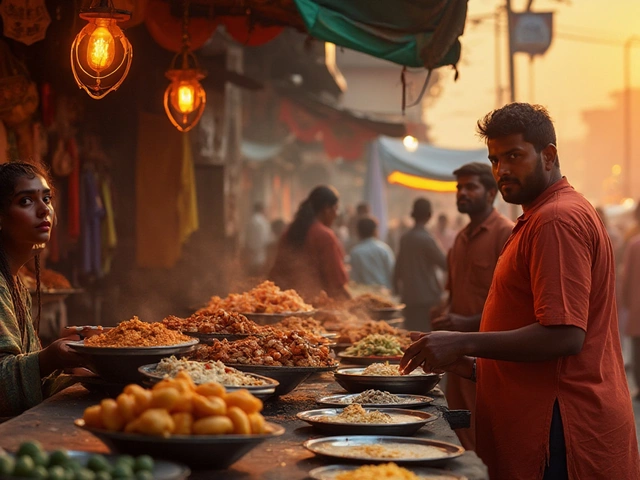Ever noticed how flights to India swing between wallet-busting and absolutely sweet deals? The price tags can change so much, it almost feels like airlines spin a giant wheel every time you book. But actually, there are patterns—months when travel costs quietly plummet. If you’ve got India’s spicy street food, wild history, or peaceful beaches on your wishlist, timing your trip right can save you hundreds, sometimes even thousands. Here’s everything I learned rooting through airfare trends, weather, and what’s really happening on the ground that affects prices.
Why Prices Fluctuate: India’s Wild Travel Calendar
So many guides only talk in broad strokes—but India’s travel calendar is a beast. Most folks just remember dry and wet seasons, or the vague "December is expensive" warnings. But airlines and hotels look at much more. Climate, school holidays, mega-festivals like Diwali, and cricket tournaments (seriously) all nudge prices up or down.
Picture this: December to mid-January is a different world than June. In December, cities like Delhi, Mumbai, and Jaipur fill up as both foreigners and Indians pack in for cool weather, Christmas, and New Year’s. Good luck finding a deal without some serious research and flexibility. Then you’ve got April and May—the pre-monsoon furnace months. College holidays start, crowds switch from backpackers to families, and airfares wobble a bit. Just when you think tickets might drop, everyone in Australia and Europe realizes it’s their school break, too—up spike the fares again!
The monsoon, stretching from June to September, is a major turning point. This season’s a paradox: while North India gets battered by rain, Southern states like Kerala are lush, and the beaches look otherworldly. But constant showers keep tourists away. Airlines respond by slashing prices, hotels drop room rates, and even luxury trains do discounts nobody talks about. That’s the sweet spot for savings—if you don’t mind getting drenched. People who love stormy afternoons and moody skies actually love India at this time. If you want cheap travel plus a less-crowded Taj Mahal, this is your season.
The Cheapest Months, Revealed
Certain months stand out if you’re chasing rock-bottom expenses. Based on 2024-2025 data, the cheapest inbound flights to India are almost always found in July and August. Booking sites like Skyscanner and India’s own MakeMyTrip show average price drops of 20-45% compared to December or January. Airlines have fewer leisure travelers and the weather isn’t just hot—it’s wet, sticky, and wild, which is exactly when locals don’t want to travel much either. Check out these fares:
| Route | July (Average Return) | January (Average Return) | % Difference |
|---|---|---|---|
| Sydney-Delhi | $790 AUD | $1150 AUD | 31% cheaper |
| London-Mumbai | £480 | £700 | 32% cheaper |
| New York-Delhi | $890 USD | $1230 USD | 28% cheaper |
You’ll notice a pattern: July and August are low-demand across almost every major origin city. Especially for folks flying from Australia, the price dip is impossible to miss. Hotels, guesthouses, and even five-star resorts often have “monsoon specials.” Street vendors are less pushy when tourism is down, and train seats clear up. I’ve seen luxury hotels in Goa drop from $220 a night to $82 in July. Even popular spots like the Andaman Islands run empty, making it perfect for anyone craving solitude.
But there’s a catch. Traveling during the monsoon means being ready for the weather: pack mosquito repellent, waterproof bags, and shoes that won’t die in ankle-deep puddles. On the plus side, the green landscapes are at their peak, markets brim with monsoon sweets like jalebi and pakoras, and temperatures (especially evenings) are way gentler than the furnace pre-monsoon season.
Destinations That Shine in the Off-Season
Not every part of India gets walloped equally by the rains. The Himalayas and the far north are surprisingly dry between June and September. Ladakh and Spiti transform into trekking and adventure capitals in July—it’s when the high passes finally thaw enough for buses and motorbikes. Places like Leh barely see a sprinkle, and accommodations slash prices compared to October’s rush. Leh-Manali Highway reopens in June, and backpacker meccas like Dharamshala and Manali are cooler, less crowded, and yes—cheaper.
Down south, Kerala gets a little wild with rain, but Ayurveda wellness resorts hop onto monsoon deals, pitching the rains as perfect for detox and relaxation. Goa’s party season ends by June, but resorts are desperate for guests, dishing out free nights, room upgrades, and dirt-cheap yoga retreats. The beaches get battered, but if you want to nurse a drink on a porch with wild waves as your soundtrack, this is heaven.
Not a fan of the monsoon? February and early March are the next best for budget hunters. Most big festivals haven’t started, families aren’t on holiday, and the weather is sweet across the country. School exams in India mean domestic tourism is low. You’ll find awesome deals on flights, especially for those booking early. Even famed golden triangle routes like Delhi-Agra-Jaipur see a dip in hostel and hotel prices before Holi and Easter pump demand back up.

Tips for Getting the Cheapest India Trip
Cheapest month to go to India absolutely means hunting for tickets and rooms during the worst weather—if you care only about the bottom line. But there’s more to smart savings than just picking a soggy calendar page. I’ve found a bunch of tips and hacks for maximising your rupees:
- Book international flights 2-5 months in advance for monsoon season (July-August) to lock in the best fares.
- Set up fare alerts on multiple sites—sometimes fares differ by $150 AUD depending on the airline’s promotion that week.
- Travel midweek (Tuesday-Thursday). Most flights in and out of India are cheaper these days versus popular weekends.
- Flexible with cities? Look at flying into less popular airports: Chennai, Kochi, or Ahmedabad can be $100 cheaper than Mumbai or Delhi in the off season.
- Stick to trains and budget buses once in India—summer and monsoon months mean more seats and fewer delays, even on short notice.
- Avoid Indian public holidays. Diwali, Holi, Eid, Republic Day, and Independence Day see huge domestic traffic spikes, with prices hiking up even in monsoon.
- Consider last-minute deals on hotels—many slash rates for walk-in guests in low months. Just double-check reviews!
- Use apps popular in India, like MakeMyTrip, ixigo, and OYO, for insider discounts—sometimes reserved for users with an Indian SIM, but worth a try using apps’ global sites.
Most international flights to India land in late evening or early morning. Book hotels with 24-hour check-in policies to avoid an extra night’s charge, or use luggage storage and roam freely before check-in. Monsoon also brings flash sales from airlines desperate to fill empty seats—don’t ignore newsletters from AirAsia, Qantas, Singapore Airlines, or Air India. Scoot and AirAsia are famous for their “surprise” monsoon promos, shaving off half the fare if you’re happy with a long-ish layover in Singapore or Kuala Lumpur.
Weather, Festivals, and Culture: What You Gain and Give Up
If you travel during the cheapest months, you’ll dodge most crowds and get near-private tours at famous attractions. Expect vendors to negotiate twice as hard—they need every sale. But the weather can be double-edged: monsoon storms hit hard and some dirt roads collapse, so flexibility is crucial. Packing a fast-drying rain jacket, slip-on sandals, and some old-school patience pays off big time.
Some small towns actually come alive during the rains. Cherrapunjee in Meghalaya, the “wettest place on Earth,” hosts mad monsoon festivals. Kerala’s snake boat races celebrate the wild rivers in August and September, and monsoon cuisine gets all its fifteen minutes of fame—think hot samosas, coconut stews, and gallons of chai. If you’re a photographer, the light after rainstorms in Rajasthan and the Western Ghats is ridiculous for dramatic photos.
You will trade away a few things: outdoor monuments might run limited hours, and some remote trails in the Himalayas shut down. Tigers in national parks hide more in the greenery, so spotting wildlife is trickier. On the flip side, if you venture outside, expect less dust and cleaner air, fewer beggars, and sometimes even “rain discounts” at shops and on tuk-tuks. Don’t forget: every city’s vibe changes in the monsoon—Mumbai’s usually-chaotic pace softens, and Kolkata’s artists suddenly flood the streets with pop-up monsoon art and jazz nights.
And then there’s the joy of travel stories only the off-season brings. Empty backstreets of Varanasi in the rain; a palace in Udaipur all to yourself; watching flamingos flock to Mumbai’s wetlands (they time their migration with the monsoon!). Never again will you see the Taj Mahal without the usual photo-bombers.
Summary: Your Cheapest Month, Your Own Adventure
If saving is your north star, head to India between July and August. That’s when deals are everywhere—airfare, hotels, and all the little extras. Yes, rain comes with the territory, but you’ll get the country at its most dramatic and uncrowded. For every plan, there’s a hack—whether you’re chasing wellness in Kerala, temples in Tamil Nadu, or the high passes of Ladakh. Stick to my tips, hunt frequent promos, and you’ll have extra cash for those wild Indian detours—maybe a side trip to Nepal, or a luxury hotel you thought was untouchable.
Let India surprise you. Sometimes the magic of travel is just in daring to go when others won’t.



